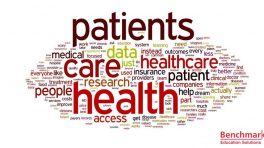Adjectives you should know for OET
- 1 Comments

An adjective is a word that describes or modifies a noun, and they are very commonly used in the English language. Of course, they are also essential for success in the OET and an English-speaking healthcare job. Knowing how to use adjectives accurately and appropriately will give you a better chance of succeeding in the exam for both written and spoken parts, but they are also something that you will make use of in your daily life and work life if you are a regular user of English.
In this lesson, I am going to tell you about some useful adjectives that may assist an OET candidate.
Adjectives for pain
Healthcare professionals, such as doctors and nurses, often need to deal with descriptions of a type of pain, and in English we have many words for this. As “pain” is a noun, a word that modifies this is an adjective. For example, the word “sharp” is used to describe a severe and sudden pain, whereas “dull” is more or less the opposite, describing a sort of pain that is less intense. You would have a very different response to the following sentences:
- The patient reports having sharp pain in his left leg.
- The patient reports having dull pain in his left leg.
It is important that patients are able to communicate to their doctor or nurse what sort of pain they are experiencing so that the situation can be dealt with effectively. If necessary, the doctor or nurse should be able to pass this information along accurately to someone else, such as a specialist. The words that we use to describe pain, then, are very important as they can differentiate between a large number of sensations, and this may help in determining what happens next for the patient.
Here are a few examples of some kinds of pain that may be described:
- Acute pain is one that comes on very quickly and does not last for long, but is very intense. It may be caused by an infection or broken bone.
- Burning pain resembles the sensation of being burned by something very hot.
- Chronic pain lasts for a long period of time. It could be related to a more serious illness, such as a form of cancer.
- Dull pain is more like a strong ache, and may be hard to locate. It is typically on-going for some time.
- Nagging pain is something very annoying and typically happens over a long period of time, but is not very intense.
- Referred pain appears in one place but is caused by a problem somewhere else. This term is unlikely to be used by a patient, but may be used by a medical professional.
- Shooting pain happens quickly and is like a bolt of lightning. It can travel from one part of the body to another, and usually does not last very long.
- Stabbing pain means that a pain feels just like being penetrated by a knife.
There are also other adjectives that are worth knowing that some patients may use to refer to their pain. These words are not necessarily specific to pain, and can have other meanings. They include:
- Tender, hot, intense, severe, tingling, aching, throbbing, excruciating
As a healthcare professional, it is important to have an awareness of the meaning of these words so that you can better assess how the patient feels and be in a position to offer appropriate help.
Other kinds of adjectives
There are, of course, other sorts of adjectives that are useful in diagnosing a patient’s problems, and these don’t all relate to pain. A “feeling” is also a noun, and words that can describe that feeling are therefore kinds of adjectives.
One common adjective that any healthcare professional should know is “dizzy.” This is a word that means the person feels unsteady as though they are about to fall over. It is associated with countless different health problems, and in some cases it can become quite severe.
A patient might say:
- I’m sometimes overcome by a dizzy sensation and it occasionally turns into a feeling of nausea.
In that sentence, “dizzy” modifies the noun “sensation,” which is similar to “feeling.”
At the end of that example, we saw another noun: “nausea.” This is often related to dizziness, but not always. It means that a person has an uncomfortable feeling in the stomach as though they were about to vomit. This is frequently used in its adjective form:
- I got dizzy and then started to feel nauseous.
Knowing the meaning of these words can help you to better understand a patient’s experiences and therefore give you a better chance to treat them. As such, these two adjectives are very helpful for OET candidates and medical professionals









Dear,
Sensation? is it countable or uncountable noun?
regards,